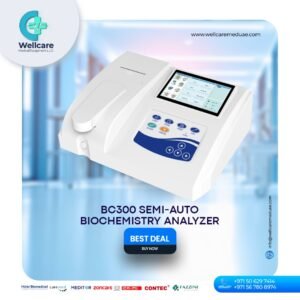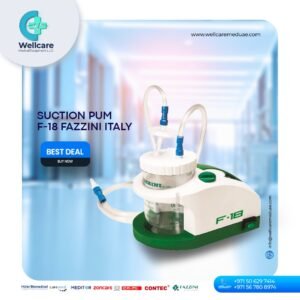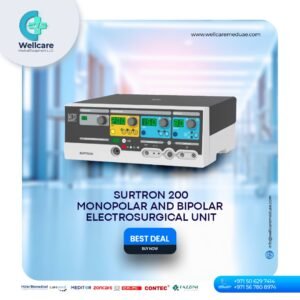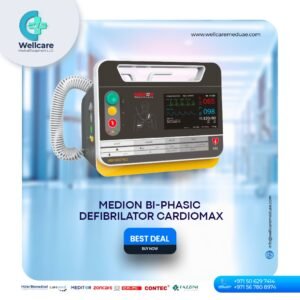Defibrillator Equipment supplier in Burundi
Defibrillator equipment is vital for treating life-threatening cardiac arrhythmias, such as ventricular fibrillation and pulseless ventricular tachycardia, by delivering an electric shock to restore normal heart rhythm. Automated External Defibrillators (AEDs) are user-friendly devices designed for public use in emergencies, providing voice prompts and automatic heart rhythm analysis. Implantable Cardioverter Defibrillators (ICDs) are implanted in high-risk patients, offering continuous monitoring and automatic shock delivery. Wearable Cardioverter Defibrillators (WCDs) serve as temporary, non-invasive solutions for those awaiting ICD implantation. Manual External Defibrillators, used by healthcare professionals, require manual rhythm interpretation and shock energy selection. These devices are crucial in increasing survival rates during sudden cardiac arrest, emphasizing the importance of accessibility, timely intervention, and technological advancements in cardiac care. Defibrillator equipment is crucial in Burundi for addressing the high mortality rates from sudden cardiac arrest (SCA), a leading cause of death. With limited access to advanced medical care, placing Automated External Defibrillators (AEDs) in public spaces and equipping healthcare facilities with defibrillators can significantly enhance emergency response capabilities. This ensures that life-saving treatment is available promptly, especially in rural and remote areas where healthcare access is limited. Additionally, incorporating defibrillators into the healthcare system promotes training and awareness, empowering both healthcare workers and the public to respond effectively to cardiac emergencies. By improving survival rates and fostering a proactive health environment, defibrillators play a vital role in enhancing Burundi's overall healthcare infrastructure.
Defibrillators are critical medical devices used to treat life-threatening cardiac arrhythmias, such as ventricular fibrillation and pulseless ventricular tachycardia. They deliver a dose of electric current (a shock) to the heart to restore a normal heartbeat. Here are the main types of defibrillators and their uses:
Types of Defibrillators
Automated External Defibrillators (AEDs):
- Use: Designed for use by laypersons with minimal training. Commonly found in public places such as airports, schools, and sports arenas.
- Features: Portable, user-friendly with voice prompts, and automatic analysis of heart rhythm.
Implantable Cardioverter Defibrillators (ICDs):
- Use: Implanted in patients at high risk of sudden cardiac arrest. Continuously monitors heart rhythm and delivers shocks when needed.
- Features: Long-term, provides both pacing and defibrillation functions.
Wearable Cardioverter Defibrillators (WCDs):
- Use: Temporary solution for patients at risk of sudden cardiac arrest who are not candidates for ICDs. Worn under clothing.
- Features: Continuous monitoring, automatic shock delivery, non-invasive.
Manual External Defibrillators:
- Use: Operated by healthcare professionals. Found in hospitals and ambulances.
- Features: Requires interpretation of heart rhythms, manual selection of shock energy.
Key Components
- Electrodes/Pads: Attached to the patient’s chest to deliver the shock.
- Battery: Provides the necessary power.
- Control Unit: Analyzes heart rhythm and directs the shock delivery.
Importance of Defibrillators
- Saves Lives: Timely use of defibrillators significantly increases survival rates in cases of sudden cardiac arrest.
- Accessibility: Widespread availability in public places and homes can lead to rapid response times.
- Technological Advancements: Modern defibrillators come with advanced features like CPR guidance, connectivity to medical records, and easy maintenance.




